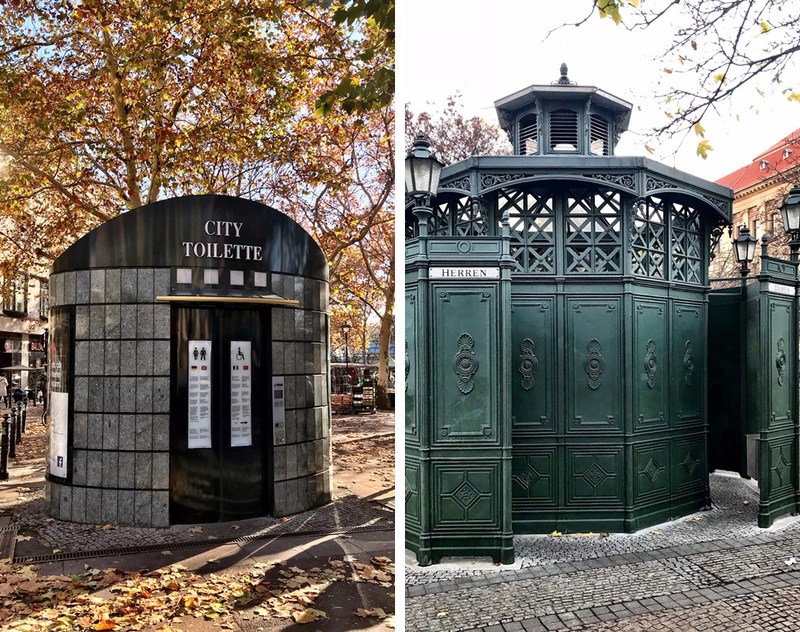Every year on 19 November, the United Nations draws the world’s attention to the global sanitary crisis on World Toilet Day. According to the website of the intergovernmental organisation, the world is not on track to reach Sustainable Development Goal 6, which ensures the availability and sustainable management of sanitation and water for all by 2030.

“Today, 4.5 billion live without a safe toilet and 892 million people still practise open defecation,” the website states. “The impact of exposure to human faeces on this scale has a devastating impact upon public health, living and working conditions, nutrition, education and economic productivity across the world.”
Of course, the residents of Germany’s capital are highly privileged in terms of sanitary facilities, but even here, a well-functioning sewer system and access to public toilets were not always a given, as Anna Haase’s “Tour de Toilette” proves.
Haase, a certified Berlin guide for decades, created this unique tour when she attended the International Tourist Guide Day, which is held annually in February, in 2005.
“The theme that year was ‘Oases of Calm’, and I wanted to do something different than the others whose ideas mostly revolved around parks and churches,” the spirited tour guide recalls.
Over the years, her “Tour de Toilette” has attracted not only tourists from all over the world but also locals who are curious to see a different side of Berlin and learn more about the city’s hygiene history and toilet culture as Haase, a treasure trove of information, shows them historical and modern public lavatories in the capital.
The tour starts at Berlin’s oldest public toilet block, which was installed in the 19th century – for men only, as Haase explains, because women didn’t “exist” in public life – and called “Café Achteck”, or Café Pentagon, in colloquial language. While pentagon refers to the toilet block’s shape, the “café” was jokingly added because it was the place where people went to in order to get rid of the coffee they drank.
From there, Haase takes her group from one toilet to the next, sharing quirky facts and insights along the way. One public toilet block, located at Wittenbergplatz, a square in the heart of the city, has been transformed into pizza place. In its original function, however, Haase explains, it was more than just a toilet.
“This square is located very closely to Berlin’s gay neighborhood, and the men used to say that this toilet was the best place to make new acquaintances,” she states.
Before there were any public toilets and a sewer system in Berlin, the city’s residents resorted to relieving themselves on the streets or using a bedpan whose contents were carelessly thrown out of the windows in the morning.
“The stench must have been dreadful,” Haase says, adding that so-called “Unrat-Weiber” (“muck women”) were collecting the faeces, while “pelerine men” (a cape) walked around the city with a pot in their hands, coming to the aid of those who needed to pee.
Even with a sewer system and the installment of both public toilets and flush toilets at home, it wasn’t always smooth sailing when nature called, Haase continues, especially in East Berlin.
“In fact, in 1989 when Germany was reunified, 60 per cent of the apartments in East Berlin didn’t have a shower or bathtub, and up to five families in one block of flats had to share one toilet,” Haase says.
After roughly two hours, the “Tour de Toilette” ends consequently at a pub called “Klo”, or “Loo”, where guests sit on toilet lids, the drinks and food are served in toilet accessories, toilet brushes and bedpans hang from the ceiling as decoration and the napkins are actually toilet paper.
It is here that Haase presents the last lavatory of the tour: a highly modern Japanese toilet that comes with a heated seat and different streams for cleaning. According to Haase, the toilet cost EUR 15,000– “as much as a small car,” she chuckles.
But as amusing and quirky Haase’s tour is, she never grows tired of stressing the fact that Berlin actually has a problem with public toilets – there simply aren’t enough, especially given the fact that the number of tourists grows steadily.
“Moreover, a person needs to go to the toilet six to eleven times daily. It’s a basic need, so why should people have to pay for it,” she says, referring to the modern city toilets that are scattered around Berlin and cost 50 cents per use.
“There are also between 11,000 and 14,000 homeless people in Berlin,” Haase continues. “Where do they go to do their business? That’s why my tour is not only meant to entertain. I also want to raise socio-critical issues that the city needs to address.”







